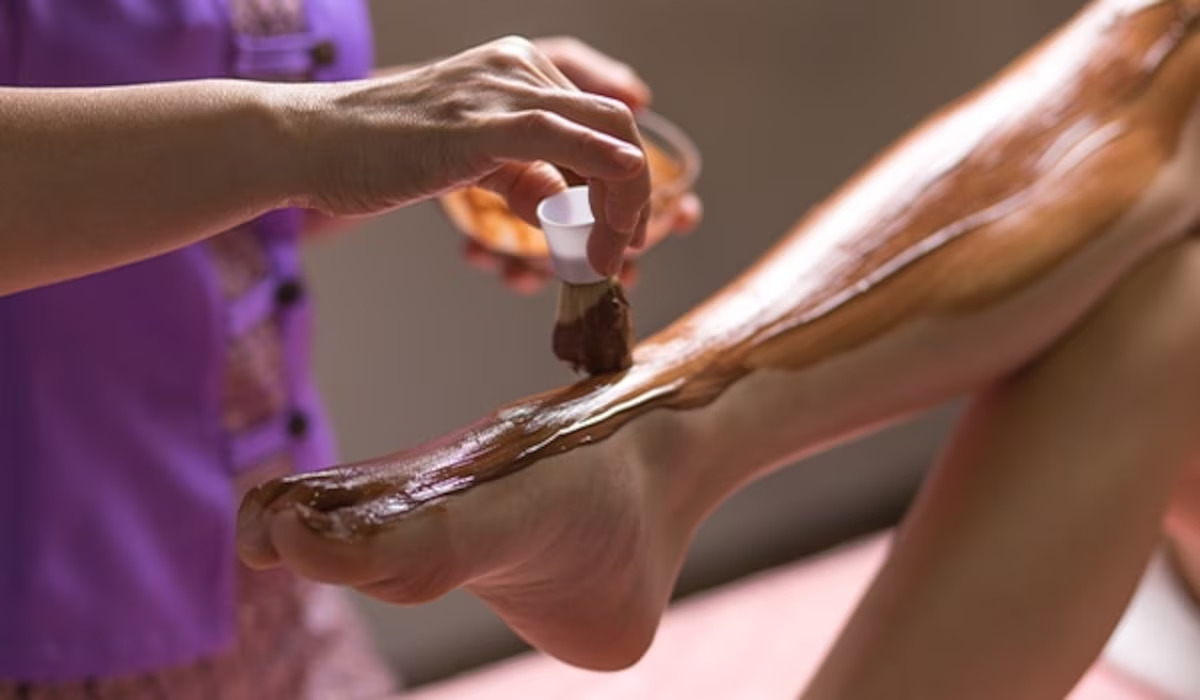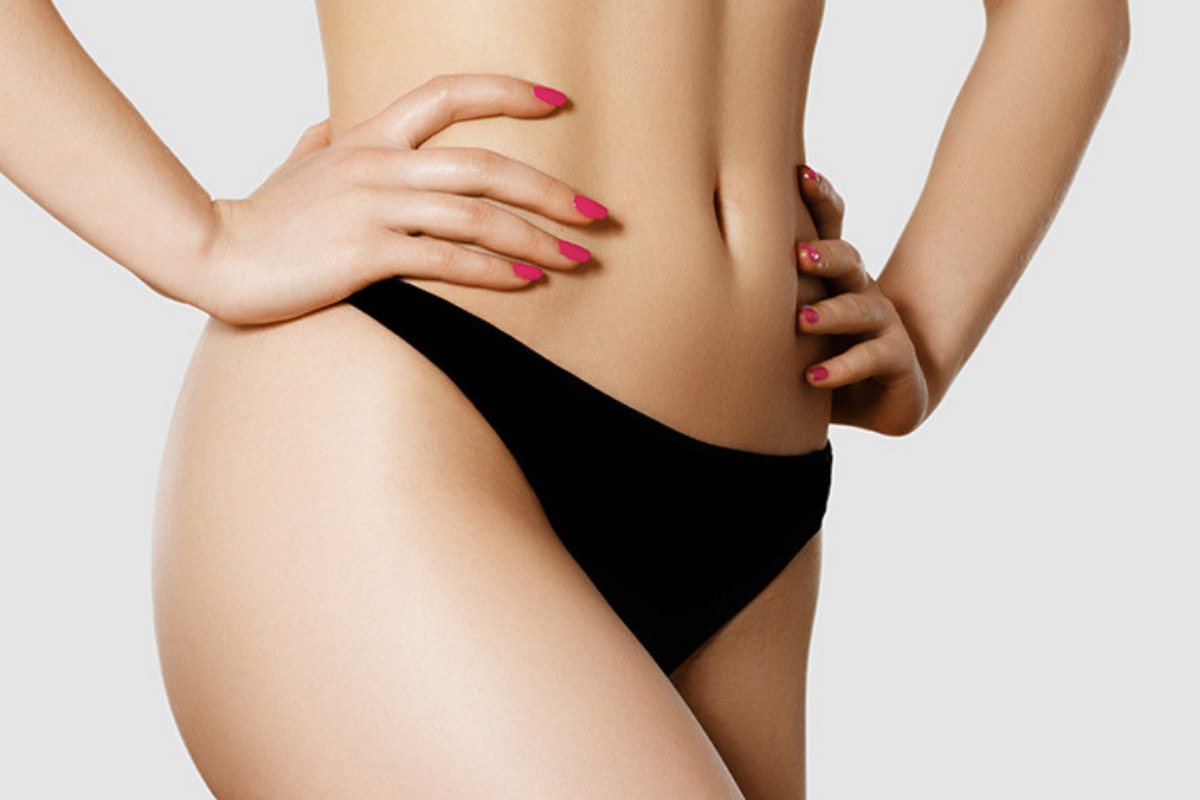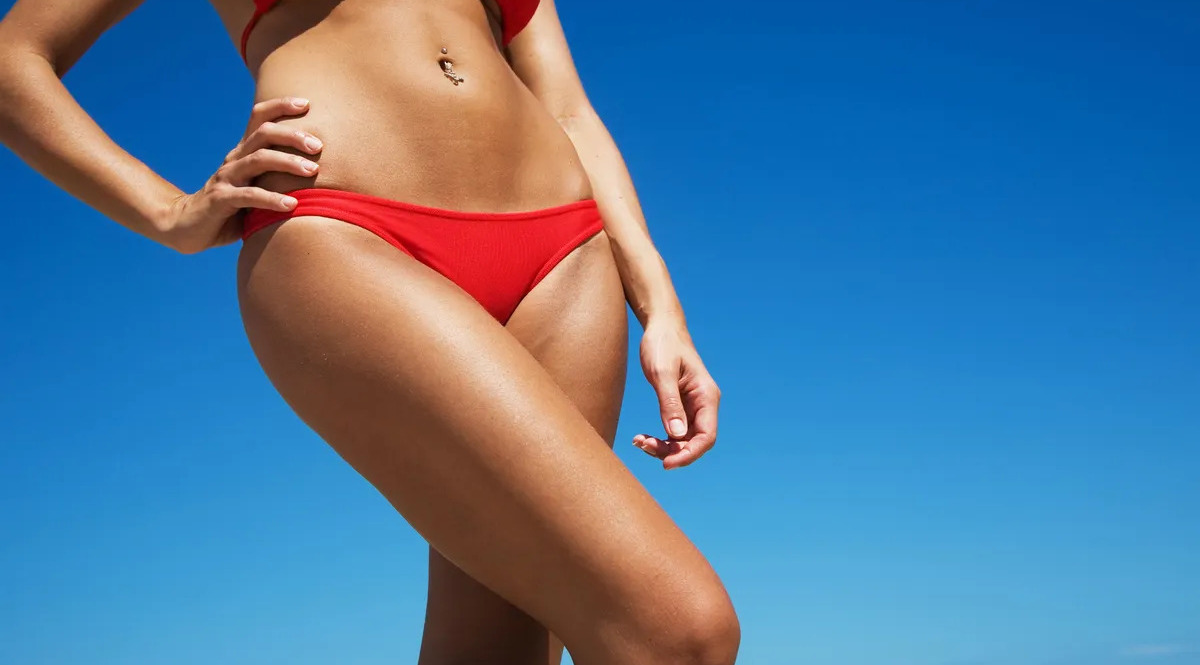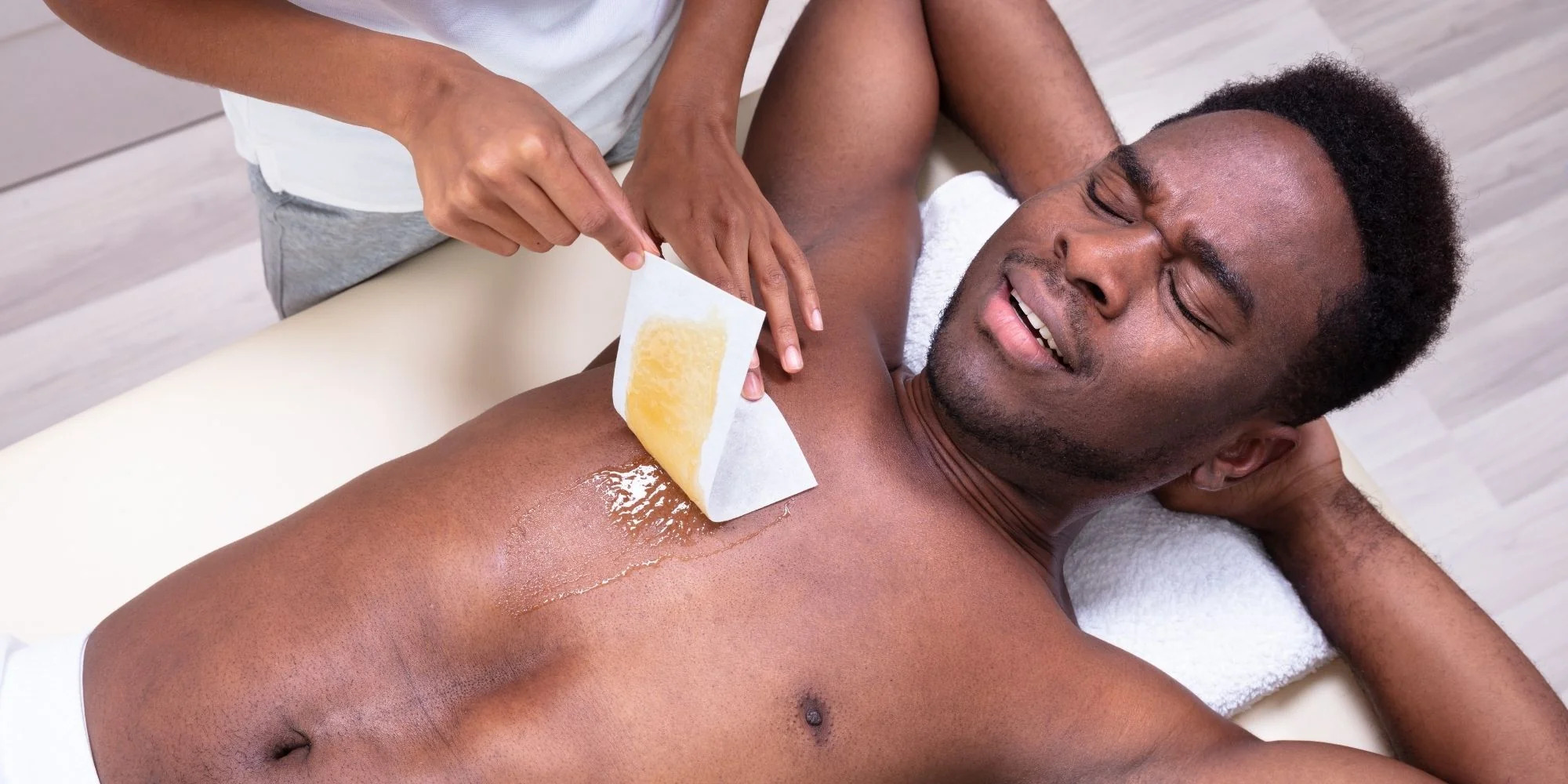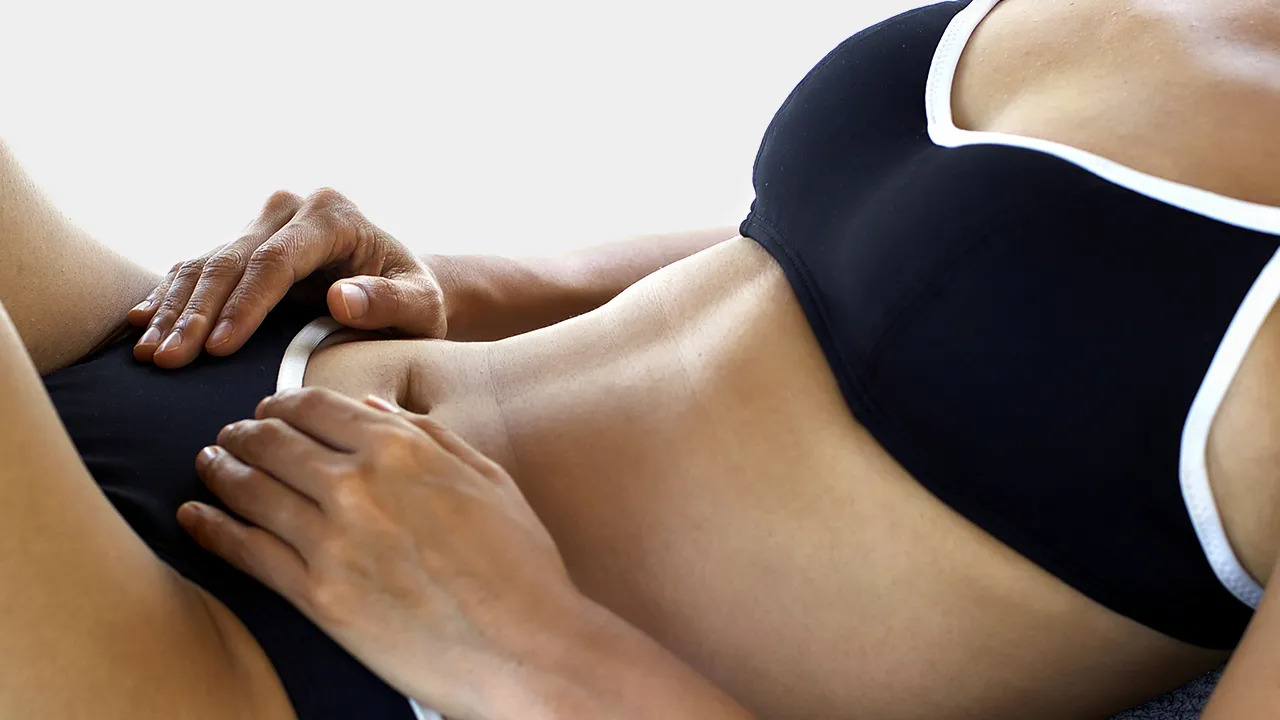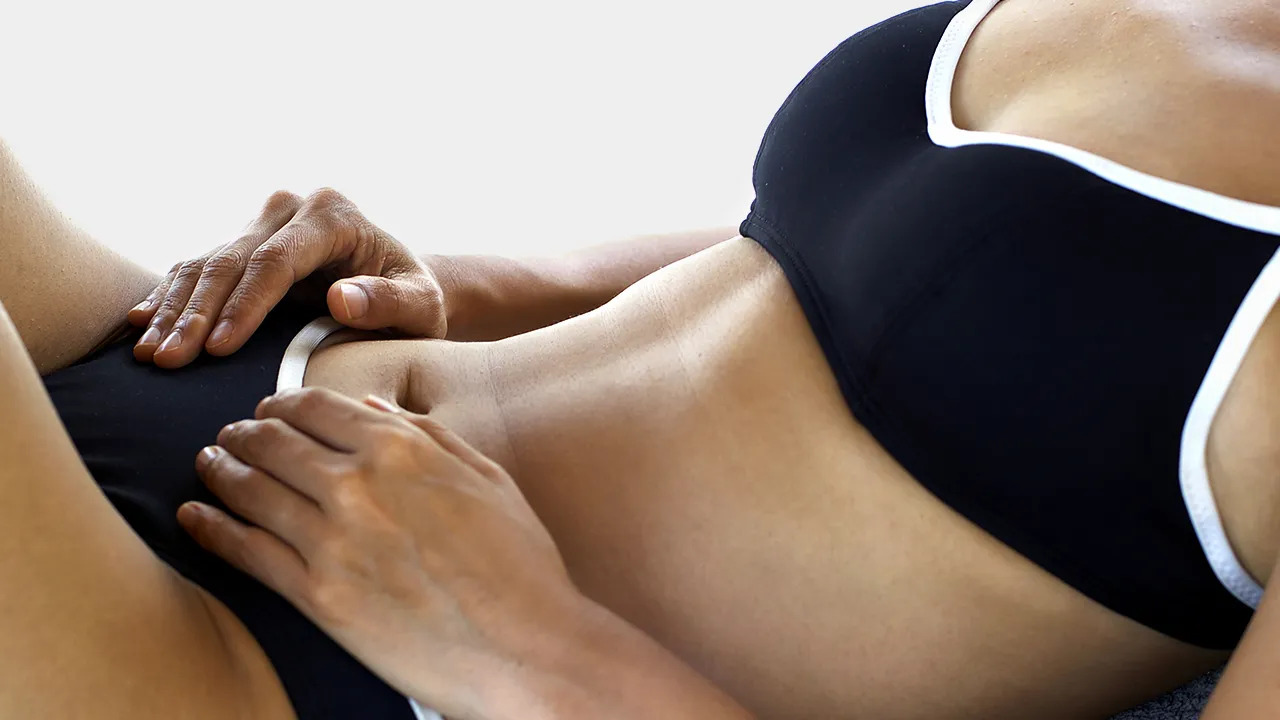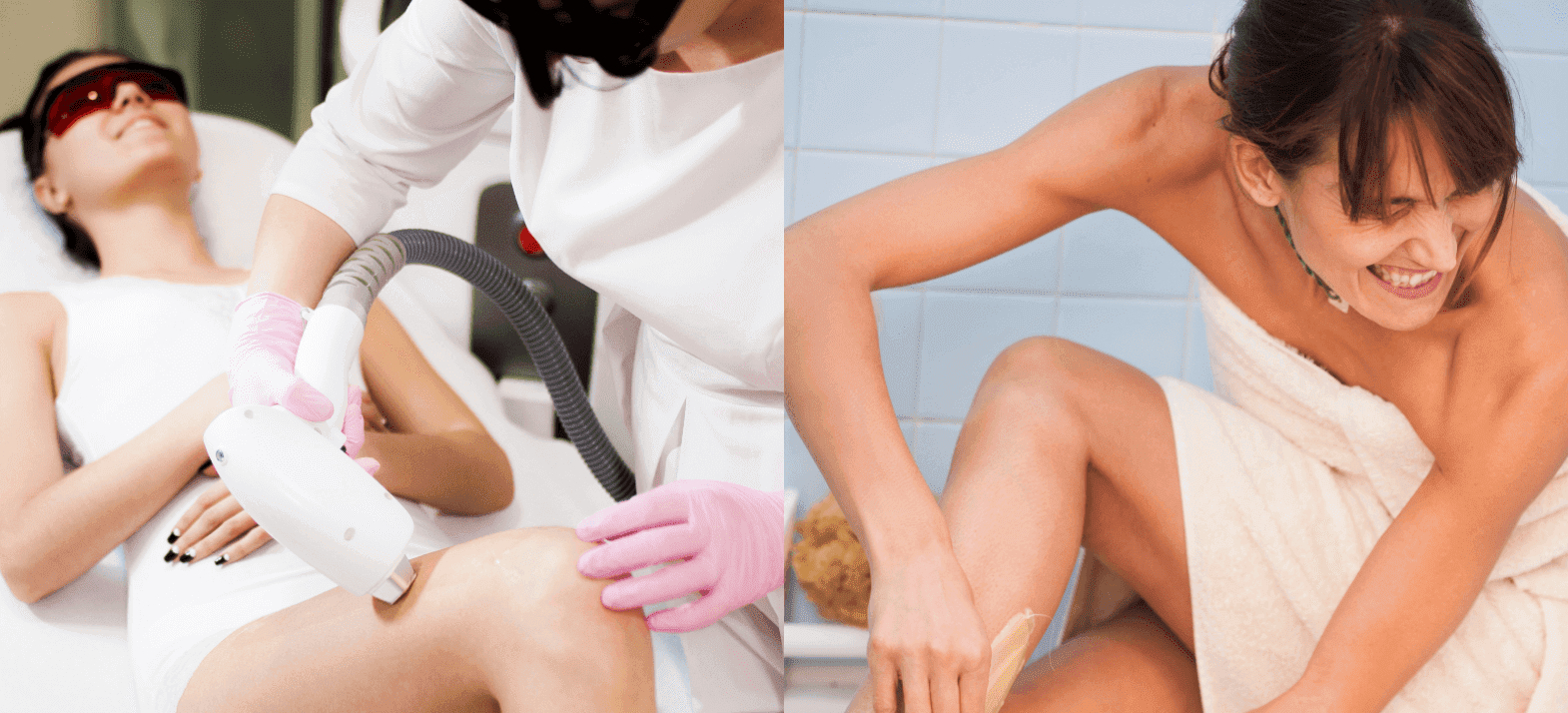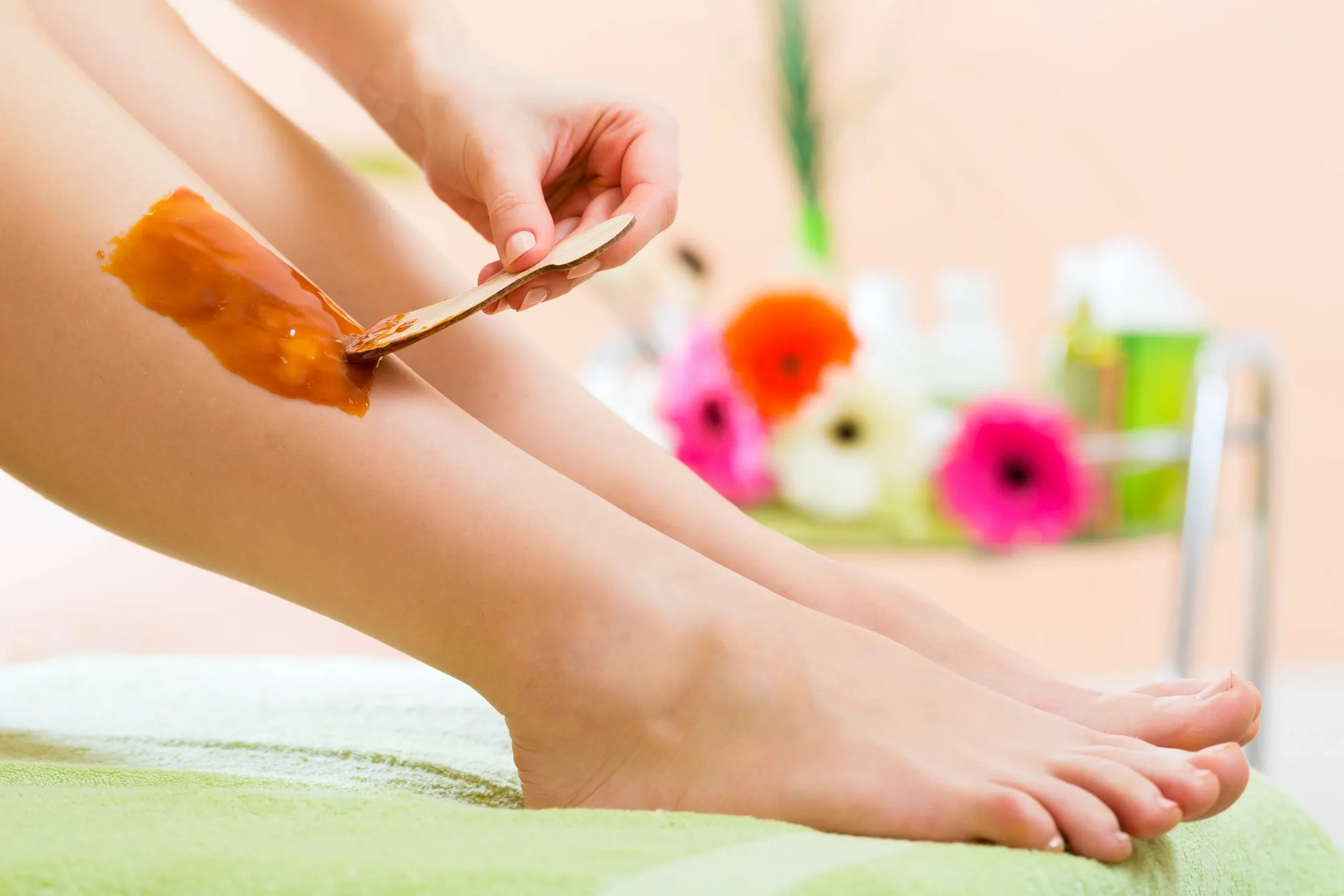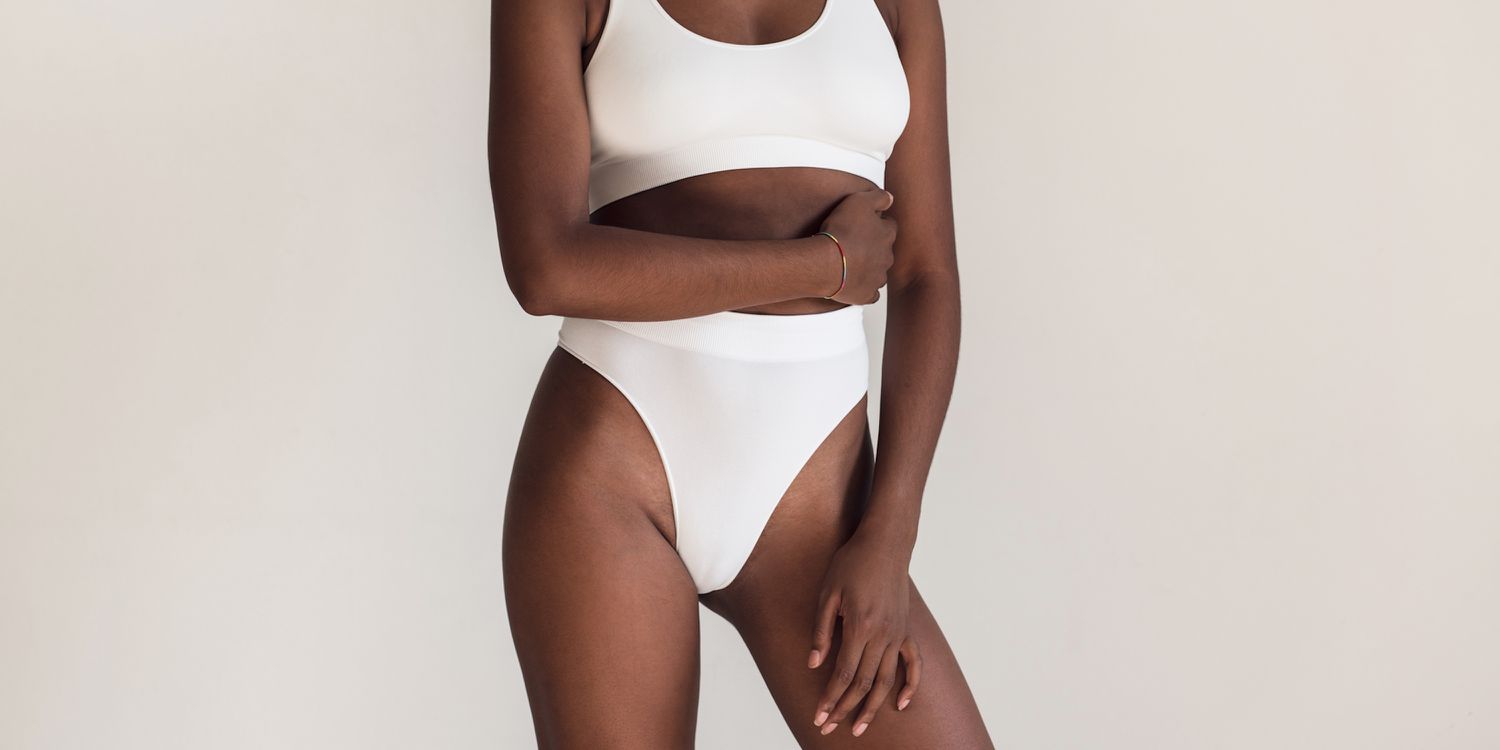

FAQs
What Is Included In A Brazilian Wax?
Modified: September 23, 2023
Discover what is included in a Brazilian wax as we answer general questions about this popular hair removal process.
(Many of the links in this article redirect to a specific reviewed product. Your purchase of these products through affiliate links helps to generate commission for Under-tec.com, at no extra cost. Learn more)
Table of Contents
Introduction
A Brazilian wax is a popular hair removal technique that removes all the hair in the pubic area, leaving a clean and smooth finish. This type of waxing originated in Brazil and has gained popularity around the world due to its long-lasting results. Whether you’re preparing for a beach vacation, wanting a more hygienic feel, or simply exploring a new hair removal option, a Brazilian wax might be on your radar.
During a Brazilian wax, a trained esthetician or waxing specialist will use a combination of warm wax and cloth strips to remove unwanted hair from the entire pubic area, including the front, back, and everything in between. It involves the removal of both the bikini line hair as well as hair from the labia and buttocks.
While the mere thought of a Brazilian wax might seem intimidating or uncomfortable, it can be a game-changer for those seeking a hair-free and smooth pubic area. The experience and results may vary from person to person, and it’s important to understand what to expect before, during, and after the waxing session.
In this article, we will explore in detail what is included in a Brazilian wax, including the pre-wax preparation, the waxing process, aftercare recommendations, and potential side effects. Whether you’re a first-timer or someone looking for more information on this popular hair removal option, read on to discover all you need to know about a Brazilian wax.
Definition of a Brazilian Wax
A Brazilian wax is a method of hair removal that involves the complete removal of hair in the pubic area, leaving the skin smooth and hair-free. It differs from other types of waxing, such as bikini waxing or French waxing, as it includes the removal of hair from the front, back, and everything in between.
The term “Brazilian wax” originated in Brazil, where it gained popularity in the 1990s. It was introduced as a way to prepare for the revealing swimwear trends in Brazil, where minimal amounts of pubic hair are desired. Since then, Brazilian waxing has become increasingly popular worldwide.
During a Brazilian wax, a trained esthetician or waxing specialist will use heated wax to remove the hair. There are two common types of wax used: soft wax and hard wax. Soft wax is applied thinly over the desired areas and is removed using cloth strips. Hard wax, on the other hand, is applied in a thick layer that hardens as it cools. Once hardened, the esthetician can remove the wax without the need for cloth strips.
It’s important to note that Brazilian waxing removes all hair from the pubic region, including the hair on the bikini line, labia, and buttocks. This type of waxing is known for providing a long-lasting result, typically lasting for several weeks before regrowth occurs.
While Brazilian waxing is primarily associated with women, it is also an option for men who desire a hair-free pubic area. However, it’s essential to find a waxing specialist who is experienced in providing Brazilian waxing services for men, as the technique and approach may vary slightly.
Overall, a Brazilian wax offers a clean and smooth result that enhances personal hygiene and can boost confidence, especially when wearing revealing swimwear or lingerie. It is a popular choice for those who prefer a hair-free pubic area and seek longer-lasting results compared to other hair removal methods, such as shaving or depilatory creams.
Pre-wax Preparation
Proper pre-wax preparation is crucial to ensure a successful and comfortable Brazilian waxing experience. Taking a few necessary steps beforehand can help minimize pain, reduce the risk of potential side effects, and achieve the best possible results. Here are some essential pre-wax preparation steps:
- Allow hair to grow: For a successful Brazilian wax, it’s important to have enough hair growth. Ideally, the hair should be at least a quarter of an inch long so that the wax can effectively grip the hair for removal. Avoid shaving or any other hair removal methods for at least two to three weeks before your waxing appointment.
- Exfoliate the skin: Exfoliating the skin before a Brazilian wax helps remove dead skin cells and helps the wax adhere better to the hair, resulting in a more effective waxing session. Use a gentle exfoliating scrub or brush in the shower a day or two before your appointment.
- Take a shower: Take a shower before your waxing appointment to ensure your skin is clean and free from any lotions, oils, or sweat. Avoid using any heavy creams or oils on the area to be waxed, as this can interfere with the wax’s ability to adhere properly to the hair.
- Avoid caffeine and alcohol: It’s best to avoid consuming caffeine or alcohol before your waxing session. These substances can make your skin more sensitive, potentially increasing discomfort during the waxing process.
- Pain relief: If you are concerned about pain during the Brazilian wax, you can take an over-the-counter pain reliever about 30 minutes prior to your appointment. This can help to minimize any discomfort experienced.
- Choose loose-fitting clothing: Wear loose-fitting clothing to your appointment to avoid any friction or irritation on the waxed area after the session. Tight clothing can contribute to ingrown hairs and other post-waxing issues.
It’s important to communicate with your waxing specialist if you are on any medication or have any skin conditions that may impact the waxing process. They can provide specific recommendations tailored to your needs.
By following these pre-wax preparation steps, you will help create an optimal environment for your Brazilian wax, ensuring a more comfortable and effective hair removal experience.
The Waxing Process
The waxing process is the key component of a Brazilian wax and involves the skilled application and removal of wax to achieve a clean and hair-free pubic area. Understanding the steps involved can help you better prepare for your waxing session. Here is an overview of the typical waxing process:
- Cleanse the area: Before starting the waxing process, the esthetician will cleanse the area to remove any oils, lotions, or debris. This step ensures that the wax adheres effectively to the hair and minimizes the risk of infection.
- Apply talcum powder: Talcum powder may be applied to the area to absorb any excess moisture and oils, allowing the wax to adhere better to the hair.
- Apply warm wax: The esthetician will apply warm wax to a small section of the pubic area using a wooden or metal spatula. The wax is typically spread in the direction of hair growth.
- Apply cloth strip or hard wax: Depending on the type of wax used, a cloth strip may be applied over the wax or, in the case of hard wax, the wax will harden on its own. The cloth strip is pressed down firmly onto the waxed area to ensure proper adherence.
- Quick removal: Once the wax and cloth strip (if used) have firmly adhered to the hair, the esthetician will perform a quick and firm removal. The removal is done against the direction of hair growth, resulting in the hair being pulled out from the root. This step may cause some discomfort or a quick stinging sensation, but it is typically tolerated well.
- Repeat the process: The esthetician will continue the process, applying and removing wax in small sections, until all desired areas have been treated.
- Tweezing and trimming (if necessary): In some cases, the esthetician may use tweezers to pluck any stubborn or stray hairs or trim the hair to achieve a more uniform length.
- Fine-tuning: After the primary waxing process is complete, the esthetician will examine the treated area and perform any necessary touch-ups to ensure a smooth and thorough result.
Throughout the waxing process, the esthetician will likely stretch the skin taut to minimize discomfort and ensure a clean pull of the hair. They may also apply gentle pressure to the waxed area immediately after removal to soothe the skin.
It’s worth noting that the waxing process may cause temporary redness, slight swelling, or mild sensitivity in the treated area. However, these symptoms typically subside within a few hours to a day.
By familiarizing yourself with the waxing process, you can better understand what to expect during your Brazilian waxing session and feel more confident and at ease throughout the process.
Waxing Technique
The waxing technique used during a Brazilian wax is a vital aspect of ensuring effective and comfortable hair removal. A skilled esthetician or waxing specialist will employ specific techniques to minimize discomfort and maximize the overall waxing experience. Here are some key elements of the waxing technique:
- Working in small sections: To ensure thorough hair removal and minimize discomfort, the esthetician will typically work in small sections at a time. This allows them to focus on each area and ensure that all hair has been properly treated.
- Stretching the skin: The esthetician will stretch the skin taut before applying the wax. This helps to create a flat surface and reduce discomfort during the wax removal process.
- Applying wax in the direction of hair growth: The wax is typically applied in the direction of hair growth to ensure proper adhesion and effective hair removal. This technique helps to minimize breakage and ensure a cleaner pull of the hair from the root.
- Removing wax against the direction of hair growth: The esthetician will swiftly remove the wax and cloth strip (if used) against the direction of hair growth. This technique allows the hair to be pulled out from the root, resulting in a longer-lasting hair-free result.
- Maintaining a consistent pull: A smooth and consistent pull is essential for minimizing pain and discomfort. The esthetician will aim for quick and even removal of the wax, minimizing any dragging or pulling that can lead to discomfort or skin irritation.
- Using proper hand pressure: The esthetician will apply the proper amount of hand pressure during wax removal to ensure an efficient and effective hair removal process. It’s important not to apply excessive pressure, as this can cause bruising or damage to the skin.
- Employing different waxing techniques for different areas: The pubic area can have different hair growth patterns and sensitivities. A skilled esthetician will adjust their technique based on the specific area being waxed, ensuring optimal results and minimizing any potential discomfort.
A knowledgeable and experienced esthetician will prioritize your comfort throughout the waxing process. They will communicate with you to ensure that the technique they use aligns with your preferences and sensitivities.
Remember that everyone’s pain threshold and sensitivity levels are different, so what might be uncomfortable for one person could be tolerable for another. If at any point during the waxing process you experience excessive discomfort, don’t hesitate to communicate with your esthetician. They can make adjustments to ensure a more comfortable experience for you.
By utilizing these waxing techniques, a skilled esthetician will provide effective hair removal while minimizing discomfort and maximizing the overall outcome of your Brazilian wax.
The Importance of Cleanliness
Cleanliness is of utmost importance when it comes to Brazilian waxing. Maintaining a clean environment and following strict hygiene practices ensures the safety, comfort, and overall success of the waxing session. Here are several reasons why cleanliness is crucial during a Brazilian wax:
- Reducing the risk of infection: A clean and sanitized environment helps minimize the risk of infection. It’s vital for the esthetician to follow proper sanitization protocols, including using clean and disposable tools, wearing gloves, and disinfecting surfaces. This reduces the chances of bacteria or other pathogens entering the skin through any micro-tears that may occur during the waxing process.
- Preventing cross-contamination: Maintaining a hygienic environment prevents cross-contamination of bacteria or other microorganisms. Each client should have fresh wax, disposable spatulas, and sanitized tools to minimize the risk of spreading any infections or diseases.
- Ensuring a comfortable experience: A clean and well-maintained waxing studio provides a more comfortable experience for clients. They can relax and focus on the process without having to worry about the cleanliness of the space or hygiene practices. Feeling at ease contributes to a positive waxing experience.
- Minimizing skin irritation: A clean environment helps minimize the potential for skin irritation. By utilizing clean towels, sanitized esthetician’s hands, and sterile equipment, the risk of introducing irritants to the skin is significantly reduced. This is especially important for clients with sensitive skin or prone to allergies.
- Promoting confidence and trust: A clean and hygienic waxing studio instills confidence and trust in clients. When they see that proper cleanliness practices are followed, they feel more comfortable and assured that their health and well-being are valued.
- Adhering to industry standards and regulations: Professional estheticians adhere to industry standards and regulations for cleanliness and sanitation. This ensures that the highest level of hygiene is maintained to promote a safe and satisfactory waxing experience for clients.
Prior to booking a Brazilian wax appointment, it’s essential to research and choose a reputable waxing studio or salon that prioritizes cleanliness and follows strict hygiene practices. Reading online reviews, seeking recommendations, and inquiring about their sanitization protocols can help you make an informed decision.
During your waxing session, if you have any concerns about the cleanliness or hygiene practices, do not hesitate to ask questions. A professional esthetician will be transparent and happy to address your concerns, providing reassurance and ensuring that you have a comfortable and sanitary experience.
By prioritizing cleanliness, you can enjoy a safe, hygienic, and worry-free Brazilian wax that leaves you feeling confident and satisfied with the results.
Duration and Pain Level
The duration and pain level experienced during a Brazilian wax can vary depending on various factors such as individual pain tolerance, hair thickness, and the skill level of the esthetician. Understanding what to expect in terms of duration and pain can help you mentally prepare for your waxing session.
Duration: The duration of a Brazilian wax can range from 15 minutes to about an hour, depending on the amount of hair to be removed and the individual’s hair growth pattern. On average, a full Brazilian wax typically takes about 30 to 45 minutes. Keep in mind that the duration may vary between individuals and waxing professionals.
Pain Level: Pain is a subjective experience, and individual pain tolerance can greatly influence the perceived pain level during a Brazilian wax. While some individuals may find the process to be uncomfortable or mildly painful, others may experience more significant discomfort. The pain level varies depending on factors such as:
- Hair Thickness: Thicker, coarser hair can be more challenging to remove and may cause more discomfort during the waxing process.
- First-time Waxers: If it’s your first Brazilian wax or you’re waxing after a long time, you may experience more discomfort initially. With regular waxing, the hair becomes finer and the process tends to become less painful over time.
- Pain Management Techniques: Some individuals find that taking over-the-counter pain relievers, like ibuprofen, about 30 minutes before their waxing session helps alleviate any discomfort.
- Esthetician’s Technique: The experience and skill level of the esthetician can greatly impact the pain level of the waxing process. An experienced professional knows how to minimize discomfort by using effective techniques, such as stretching the skin, quick wax removal, and creating a relaxed and comfortable environment during the session.
- Mindset and Relaxation: Feeling relaxed and having a positive mindset can help manage any discomfort during the waxing process. Deep breathing and focusing on the end result can help distract from any temporary pain.
Communication with your esthetician is crucial. Let them know if you have any concerns or if the pain becomes unbearable during the waxing session. They can adjust their technique or provide additional guidance to ensure your comfort.
It’s important to note that any discomfort experienced during the waxing process is typically short-lived. After the initial wax, subsequent sessions may be more comfortable as the hair becomes thinner and the skin acclimates to the process.
Remember, pain tolerance and the duration of the waxing process can vary from person to person. Maintaining a consistent waxing schedule can help minimize discomfort over time, and the results, including smooth and hair-free skin, are well worth the temporary discomfort for many individuals.
Aftercare Recommendations
Proper aftercare following a Brazilian wax is crucial to maintain the health and appearance of the treated area. By following these aftercare recommendations, you can help minimize any potential discomfort, reduce the risk of complications, and promote a quick recovery:
- Avoid hot showers and baths: For the next 24 to 48 hours after your wax, avoid hot showers and baths. Hot water can increase sensitivity and potentially cause irritation or inflammation in the freshly waxed area. Stick to lukewarm water instead.
- Avoid sun exposure: Stay out of direct sunlight or tanning beds for at least 24 to 48 hours after your wax. The treated area may be more sensitive to UV rays, and sun exposure can increase the risk of skin irritation or discoloration.
- Avoid tight clothing: Opt for loose-fitting clothing after your Brazilian wax. Tight clothing can cause friction and irritation, potentially leading to ingrown hairs or delayed healing.
- Avoid excessive sweating: Avoid vigorous exercise or activities that cause excessive sweating for at least 24 to 48 hours after your wax. Sweating can irritate the skin and increase the risk of ingrown hairs or infection.
- Moisturize regularly: Keep the waxed area moisturized to help soothe the skin and prevent dryness. Avoid fragranced lotions or harsh chemicals, as these can irritate the skin. Opt for a gentle, unscented moisturizer or a specifically formulated post-waxing product.
- Exfoliate after 48 hours: After 48 hours, gentle exfoliation can help prevent ingrown hairs. Use a soft bristle brush or a gentle exfoliating scrub to remove dead skin cells and promote healthy hair growth.
- Avoid sexual activity: Refrain from sexual activity for at least 24 hours after your Brazilian wax. Friction and bacteria introduced during sexual activity may cause irritation or infection in the treated area.
- Avoid touching or scratching: It’s essential to avoid touching or scratching the waxed area, as it can introduce bacteria and potentially lead to infection. If any itching occurs, apply a soothing lotion for relief instead.
- Stay consistent with waxing appointments: To maintain smooth and hair-free skin, it’s important to establish a regular waxing schedule. Most experts recommend scheduling Brazilian waxes every three to four weeks, depending on individual hair growth.
- Consult your esthetician: If you experience any persistent redness, swelling, severe pain, or signs of infection (such as pus or increased warmth), it’s important to consult your esthetician or a healthcare professional for guidance and appropriate treatment.
By following these aftercare recommendations, you can promote optimal healing and maintain the results of your Brazilian wax. Remember, the skin may be slightly more sensitive immediately after the waxing session, but this typically subsides within a few days.
If you have any specific concerns or questions regarding aftercare, don’t hesitate to reach out to your waxing specialist for personalized guidance. They can provide further recommendations based on your skin type and individual needs.
Potential Side Effects
While Brazilian waxing is generally safe and well-tolerated, there are some potential side effects to be aware of. It’s important to understand these possible reactions to ensure you can take appropriate measures and make an informed decision about undergoing a Brazilian wax. Here are some common potential side effects:
- Redness and Irritation: It’s common to experience temporary redness and irritation immediately after a Brazilian wax. This is a normal reaction as the skin reacts to the removal of hair from the root. The redness and irritation should subside within a few hours to a day.
- Sensitivity and Discomfort: Some individuals may experience sensitivity or discomfort in the waxed area. This can vary depending on individual pain tolerance, hair thickness, and skin sensitivity. However, any discomfort or sensitivity is usually temporary and typically resolves within a few days.
- Ingrown Hairs: Ingrown hairs may occur after a Brazilian wax, especially if proper aftercare and exfoliation are not followed. These can appear as small bumps or redness around the hair follicles. Regular exfoliation and moisturization can help minimize the occurrence of ingrown hairs.
- Folliculitis: In some cases, bacteria may enter the hair follicles during the waxing process, causing inflammation and infection known as folliculitis. Symptoms may include redness, swelling, and pus-filled bumps. Keeping the waxed area clean and following proper aftercare guidelines can help reduce the risk of folliculitis.
- Allergic Reactions: Although rare, some individuals may have an allergic reaction to the wax or other products used during the Brazilian waxing process. This can result in redness, itching, or a rash. Patch testing before the waxing session can help identify any allergies or sensitivities.
- Bruising or Skin Trauma: Excessive force or improper technique during wax removal can lead to bruising or trauma to the skin. This can occur if the esthetician pulls the wax too forcefully or if the skin is not held taut during the removal process. Choosing a skilled and experienced esthetician can minimize the risk of bruising or skin trauma.
If you experience any persistent or severe side effects, it is important to seek advice from your esthetician or a healthcare professional. They can provide guidance and recommend appropriate treatment for any complications that may arise.
It’s worth noting that the majority of individuals who undergo a Brazilian wax experience minimal side effects that resolve within a short period. By adhering to proper aftercare guidelines, maintaining good hygiene, and scheduling regular waxing appointments, you can minimize the risk of side effects and enjoy the long-lasting results of a Brazilian wax.
DIY Brazilian Wax vs. Professional Waxing
When it comes to a Brazilian wax, you may wonder whether it’s better to try a DIY approach or seek professional waxing services. Both options have their pros and cons, and the choice ultimately depends on your preferences, comfort level, and desired results. Here’s a comparison between DIY Brazilian waxing and professional waxing:
DIY Brazilian Wax:
DIY Brazilian waxing involves performing the waxing process on yourself at home. Here are some considerations:
- Cost: DIY waxing kits are generally more affordable than professional waxing services. However, keep in mind that the results may not be as effective as those achieved by a trained esthetician.
- Convenience: DIY waxing allows you to perform the procedure at your own convenience, without needing to schedule an appointment or visit a salon. You have full control over the timing and duration of the waxing session.
- Privacy: For those who prefer privacy, DIY waxing offers the comfort of performing the procedure in the privacy of your own home without the presence of a stranger.
- Experience: DIY waxing requires some level of practice and skill to achieve optimal results. It may take time to learn the proper technique and gain confidence in performing the waxing process accurately.
- Potential for Errors: Without professional guidance, there is a higher risk of errors or mistakes during the waxing process, leading to discomfort, ineffective hair removal, or skin irritation.
Professional Waxing:
Professional waxing involves visiting a trained esthetician or waxing specialist at a salon or spa. Here are some considerations:
- Expertise: Estheticians who specialize in waxing have the knowledge, experience, and proper technique to provide efficient and effective hair removal. They are skilled in minimizing pain and discomfort during the process.
- Quality Products: Professional estheticians use high-quality products, including professional-grade waxes and aftercare products, which may result in superior hair removal and overall skin health.
- Personalized Approach: With professional waxing, the esthetician can tailor the service to your specific needs and preferences, ensuring a personalized and comfortable experience.
- Reduced Risk of Errors: Professional waxing significantly reduces the risk of errors or mistakes, such as improper wax application or removal. Trained estheticians know how to minimize discomfort and achieve optimal results.
- Time and Effort: While professional waxing requires scheduling an appointment and visiting a salon, it saves you the time and effort of learning and performing the waxing process yourself.
It’s important to keep in mind that everyone’s preferences and circumstances are different. If you decide to try DIY waxing, make sure to follow instructions carefully and consider starting with smaller areas before attempting a full Brazilian wax. If you prefer professional waxing, research reputable salons or spas and communicate your needs and expectations with the esthetician.
Ultimately, professional waxing generally provides a more efficient and comfortable experience by trained specialists. However, the choice between DIY Brazilian waxing and professional waxing ultimately comes down to personal preference, experience, and desired results.
Conclusion
A Brazilian wax is a popular hair removal technique that offers a clean and smooth pubic area by removing all hair from the front, back, and everything in between. It originated in Brazil and has gained popularity worldwide. Understanding what is involved in a Brazilian wax can help you prepare for the process and make an informed decision.
Pre-wax preparation is crucial to ensure a successful waxing session. Allowing the hair to grow, exfoliating the skin, taking a shower before the appointment, and avoiding caffeine and alcohol are essential steps to follow. Choosing loose-fitting clothing and managing pain with over-the-counter pain relievers can also enhance your experience.
The waxing process itself involves applying warm wax to small sections of the pubic area and removing it against the direction of hair growth. Skilled estheticians use specific techniques such as stretching the skin, applying the wax in the direction of hair growth, and maintaining a consistent pull to ensure effective hair removal.
Cleanliness is of utmost importance during a Brazilian wax to reduce the risk of infection and cross-contamination. Opting for professional waxing ensures adherence to industry standards and regulations regarding cleanliness and hygiene, providing a comfortable and safe experience.
Aftercare is essential for maintaining the health and appearance of the waxed area. Avoiding hot showers, sun exposure, and tight clothing, while moisturizing regularly and exfoliating after 48 hours, can promote optimal healing and minimize potential complications.
Potential side effects of a Brazilian wax, such as redness, irritation, ingrown hairs, and folliculitis, are typically temporary and can be managed with proper aftercare. However, it’s important to seek professional advice if persistent or severe side effects occur.
When considering a Brazilian wax, you can weigh the options of DIY waxing or seeking professional waxing services. DIY waxing offers cost savings and privacy, but professional waxing provides expertise, superior products, and reduced risk of errors.
In conclusion, a Brazilian wax can be a transformative hair removal option, providing a clean and smooth pubic area. By understanding the process, following proper preparation and aftercare, and choosing the method that suits your preferences, you can enjoy the long-lasting results and confidence that come with a Brazilian wax.

